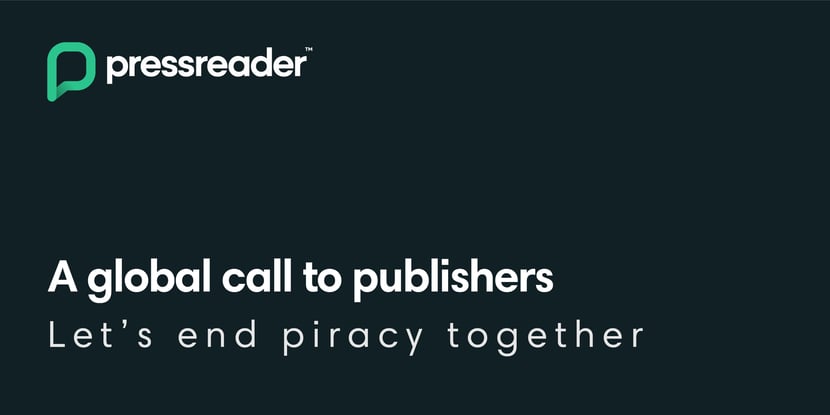Since the dawn of the internet, illegal distribution of content has been on a meteoric rise. As far back as 1998, before the web became mainstream, the US Digital Millennium Copyright Act (DMCA) was signed into law to support treaties set forth by the World Intellectual Property Organization (WIPO). But as honorable as their intentions were, these laws and those who enforce them were never able to control the escalating abuse, particularly with the advent of distribution channels with self-publishing mechanisms built into them (e.g., YouTube, social media, and messaging platforms like WhatsApp and Telegram). Besides, DMCA has a limited geographic reach, so we’re effectively dealing with a patchwork of legal protection at best.
What’s also obvious to all is that copyright infringement has reached epic proportions. In terms of movies, TV, and music, global online piracy costs the US economy US$29.2B in lost revenue every year. Over 2.5 billion images are stolen each day, with license violation damages of up to US$586B daily.
Closer to home, the damages for the recent illegal distribution of Italian newspaper and magazine content through Telegram are close to US$734K a day or US$273M a year. We applaud the Italian publishers, their associations, and law enforcement in their efforts to track down the pirated content and close the leaks in the distribution channels where the information was shared.
But digital distribution channels aren’t the culprits in the piracy wars; they’re just the plumbing. Today it’s WhatsApp in Spain and South Africa and Telegram in Italy. Tomorrow, it could be Sendbird in the US or Line in Korea. Any place people connect online is ripe for exploitation.
And despite the rampant rise in cybercrime, much of the world (including some publishers) still take a laissez-faire attitude towards it because every internet citizen steals — most without even realizing it.
PressReader has been in the business of protecting publishers’ content for over 20 years, and we’ve spent a lot of effort and money building innovative solutions to safeguard it. From the launch of our first products, we took measures in protecting the content which publishers entrusted us with for distribution. Strangely, it was a blessing and a curse at the same time. When publishers asked us to offer a PDF download option back in 2004, we knew it would lead to abuse. So we developed a DRM system at significant expense to us, which allowed readers to download a publication in an enhanced and protected replica format they could read offline, but not share with others.
When “Print to PDF” became a standard feature in operating systems that we couldn’t deactivate, we added watermarks to the printed pages to discourage users from illegally copying them and tracking those that did.
When obscure verticals like cruise ships couldn’t access content over the internet affordably, we could have opened a channel of PDFs for them to download, but that would put the content at risk. Instead, we made the ships install an offline server that would ensure the content was protected.
We’ve always advocated against offering PDF downloads not only because of their poor user experience (especially on mobile) but because of the threat they bring to our publishing partners. And although we lost ePaper business to competitors who don’t share our concerns for content security, we remained diligent in our mission to safeguard the content entrusted to us. But we are still saddened by the publishers who, despite our warnings, let the race for revenue risk their intellectual property and erode their profits.
But even as we continually look for ways to protect against piracy, there will always be someone who will find a way to circumvent our safeguards. Today, people can take screenshots of pages on their devices and combine them into a PDF and share it on any channel they like, and there is no way to trace it back. Some users take screenshots for their legitimate and completely benign personal use, so in implementing any changes to the user experience, we need to be mindful that this is a feature that they’ve grown accustomed to using.
But, making changes to this functionality seems to be the only realistic way that would hopefully thwart the illegal activities of others, at least for now. However, there is a technological catch. We can restrict the ability to take screenshots, or limit the number of screenshots, on Android devices, but not on iOS. To get Apple to change its policy and allow app developers to set a screenshot limitation in apps, we need publishers to write to Apple, emphasizing how important this feature is in protecting copyrights of all content creators. As was the case when Apple introduced strict policies and commercial terms for in-app purchases that affected content producers, a collective voice is the only way this critical issue will get the attention and resolution it needs.
What’s important to remember is that protective measures tend to wear off. Scouring the web for illegally distributed content is an exhausting and unfulfilling exercise. Because plugging one hole isn’t going to stop the flood of stolen content on the web entering another. Criminals will always find a way to get what they want.
Paywalls are particularly enticing to thieves because when less than 20% of people are willing to pay for digital news, the content behind those paywalls becomes more attractive for criminals to steal. Paywalls incentivize piracy. Which brings me to the next point — we need to work together to create market conditions that disincentivize it.
Do you remember Napster? When the record labels’ pricing model of US$15/CD didn’t sit well with consumers, music fans looked for other ways to access music they felt was overpriced. In its stubbornness not to give listeners what they wanted, the music industry gave birth to Napster. When iTunes launched with a pricing model people could accept, Napster was no longer needed. And when Spotify offered an even more attractive aggregated solution, iTunes became all but obsolete. The lesson here is that all of these platforms during their heyday gave consumers what they wanted — convenience and choice at the right price. Publishing is no different.
PressReader has always believed that quality content deserves compensation, but we also advocate for the democratization of information. How are both possible? In the digital media space, there are lots of companies more than willing to sponsor access to quality content on behalf of their customers. Libraries, hotels, airlines, cruise ships, and ferry lines have been doing this for years. And since the COVID-19 pandemic, we’re seeing many other end-user facing verticals recognize the value journalism brings to their customers, including the armed forces, healthcare facilities, property management companies, retirement homes, loyalty programs, and financial services.
For years, we’ve been saying that the survival of mainstream media depends on revenue diversification. Advertising and subscription revenue alone is not going to sustain the industry. But despite that, many publishers continue to focus on those two income streams. Anything else gets lip service at best.
COVID-19 has upended our entire industry, but it has not killed the hunger for quality journalism. There are many other ways to monetize readers’ time and attention. All it takes is a little imagination and the will to branch out of our comfort zones. But I will not be exaggerating in saying that the future of our industry depends more on what we do now and do quickly than it has ever been before.
If we work together and provide people with multiple ways to find and legally consume content at the right price, there’ll be more time to focus on creating more quality content, grow revenue and profits, and put cybercriminals out of business. If you have other ideas on what can be done to reduce piracy, let’s talk.
In the meantime, I’m urging you to please send a note to Apple, and make your voice heard. You’re welcome to draft it yourself, but we’ve also taken the liberty to suggest the wording to make it easier for you:
Dear Apple,
I am addressing this letter to raise significant concerns we have as a publisher about technological restrictions on the iOS platform that prevent us from fighting piracy. Since the beginning of the global pandemic, we have seen a significant increase in our content being pirated and distributed via various social and other platforms. This is being done in many cases by screen capture on mobile devices. We have been working with our technology partners to eliminate this and have been successful with Google, but currently, your terms and conditions prohibit inserting the required code to disable users from taking screenshots from the digital newspapers and magazines, and then distributing them illegally.
In the middle of these unprecedented times, the publishing industry has been required to adapt rapidly to sustain itself and deliver the quality content readers know and trust globally. The iOS platform plays a pivotal role in delivering that content, but the piracy issue must be addressed. As noted, other app platforms (Google/Android, and more recently Huawei), allow our technology providers to enable this required code.
Noting how Apple has supported other key industries like music and film, we know that you will review this and work to help protect our content.
I look forward to your response.
Let’s do this!
Regards,

Alex Kroogman | CEO, PressReader Group of Companies



.png)


